Surprisingly, now Japanese monkeys can ride deer!
Japanese Monkey (Macaca fuscata yakui ), also known as giant monkeys, have recently been observed by biologists that they can ride on the head and back of sika deer (Cervus nippon yakushimae). These two species have coexisted peacefully in the forests of Japan for a very long time. The relationship between them is extremely close and always mutually beneficial: the deer eat the nuts and fruit dropped by the monkeys in exchange for the monkeys being able to groom and remove parasites from the deer people (section). The main purpose is to collect salt on the body of the deer). Sometimes, the deer also accept these monkeys riding on their back to move when they go along the road.
However, scientists have discovered that the friendship of these two animals is more than just observations and eye contact.

The researchers found that the dynamics of this mutually beneficial relationship between monkeys and deer began to shift to a somewhat perverted approach, with the monkeys starting to see deer as their own kind. .
One of the first times this behavior was observed by scientists was on the island of Yakushima, Japan, in 2015, when a low-level male monkey attempted to ride at least two different female deer. While one of the two deer did not notice the monkey making movements on its back, the other one noticed and ran away.
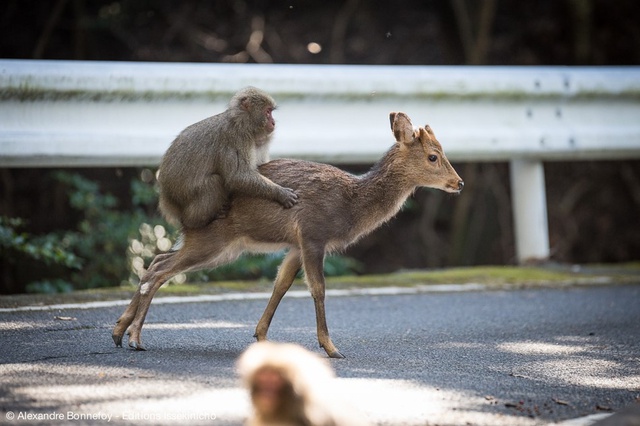
Between 2012 and 2015, another team of researchers delved into the odd behaviors of Japanese macaques. Overall, they recorded a total of 258 deer rides at Minoo, north of Osaka, Japan. Interestingly, however, only young female monkeys have been spotted riding sika deer.
Lead author Noëlle Gunst told Inverse that there are various theories about the key factors behind the monkey-deer relationship. One theory is that the Japanese macaques may have experienced a special kind of stimulation when riding and grooming the deer, so that over time the monkeys came to regard the deer as their own species.
However, the authors note that none of the above explanations is just conjecture, with no scientific basis, and that this behavior may be a new habit of Japanese monkeys.

Before that, Japanese monkeys impressed most people around the world with their ability to bathe in hot springs to beat the cold in winter. The average male monkey weighs about 11.3 kg, while the female is slightly smaller at about 8.4 kg. Snowflakes that live in colder areas tend to be heavier. The height of the male monkey is about 57 cm, while the female monkey is 52 cm. Their tails are only about 9 – 10 cm long in male monkeys and about 8 cm in female monkeys. They have a hairless face with pale pink skin. The rest of the body is covered in thick, dense hair, usually brown, gray or yellow.
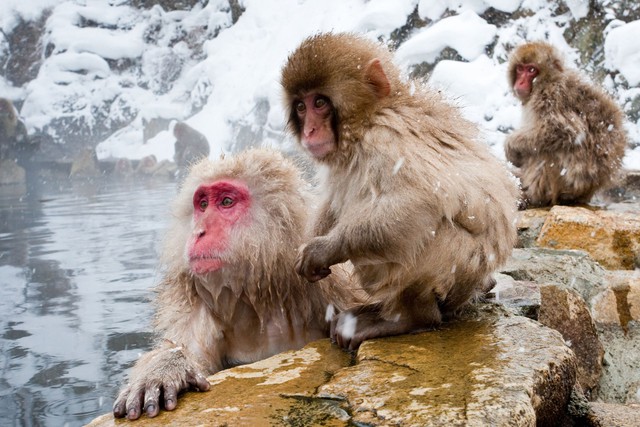
Unlike most primates in the world, the Japanese macaque lives further north, where it has a cold climate and many months of snowfall. Therefore, they are also known as snow monkeys. Long known for their wisdom, Japanese snow monkeys know how to wash fruits and vegetables before eating, even often pulling each other to soak in hot water to avoid cold.
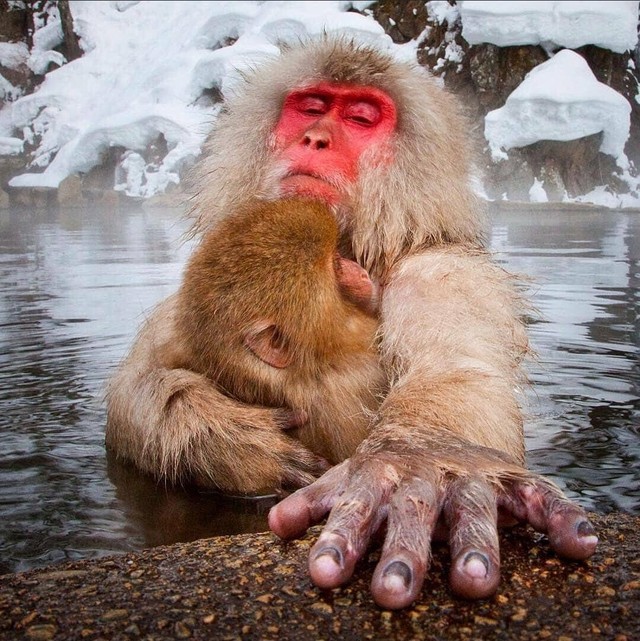
With the exception of subtropical Okinawa, most parts of Japan experience snowfall in winter. The northeast monsoon blowing from mainland Asia is blocked by the mountain system running across Japan causing heavy snowfall from Hokkaido to central Honshu. In the border area between the two prefectures of Niigata and Fukushima or the mountains of the Hokuriku (Northern Mainland), it is normal to have 3 meters of snowfall. Niigata Prefecture is one of the snowiest places in the world with a record of 8 meters of snow.

Winter in Nagano is extremely cold. Jigokudani Park is usually covered with snow and ice at least 4 months a year, the temperature can drop to -15 degrees Celsius, white snow everywhere. However, the snow monkeys here are not worried, because the hot springs in Jigokudani are their true paradise.
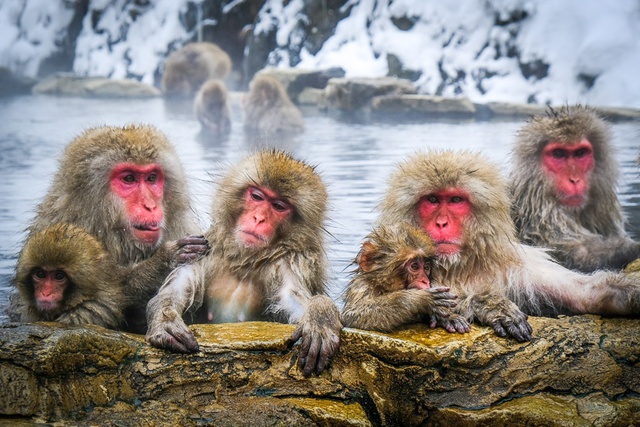
Snow monkeys are a type of monkey typical of Japan, often growing in cold places. That is why they are very concentrated in Jigokudani. Jigokudani is also known as “Hell’s Valley” because it is dotted with lava pits, hot steam vents, and the smell of sulfur, making the mountain scenery become eerie and fanciful. Because of its special terrain, there are many top natural hot springs in Japan.
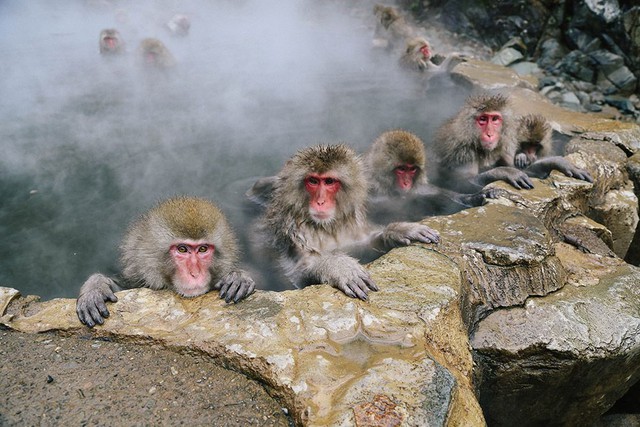
According to research by the Institute of Primate Research, Kyoto University, the snow monkeys in Jigokudani bathed in hot water were not merely to warm their bodies. A hot bath helps them reduce stress because snow monkeys are often more stressed when they have to regulate their body temperature in the winter. At the same time, scientists show that soaking in hot water also helps the monkeys increase their fertility and survive in the cold winter.
at Blogtuan.info – Source: genk.vn – Read the original article here



